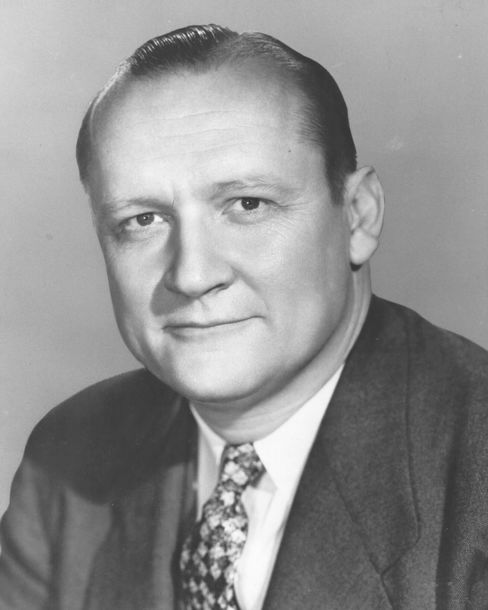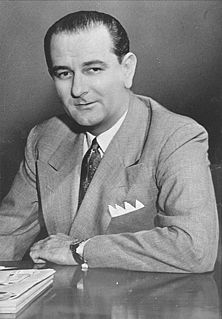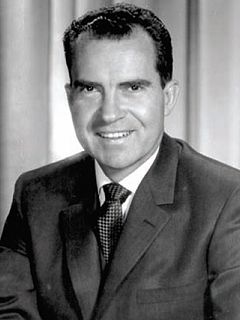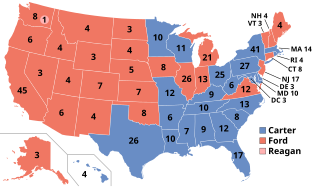| |||||||||||||||||
| |||||||||||||||||
| |||||||||||||||||
Election results by county | |||||||||||||||||
| |||||||||||||||||
The California gubernatorial election, 1958 took place on November 4, 1958.
| |||||||||||||||||
| |||||||||||||||||
| |||||||||||||||||
Election results by county | |||||||||||||||||
| |||||||||||||||||
The California gubernatorial election, 1958 took place on November 4, 1958.
California was considered a Republican stronghold in the post-World War II era, electing republican governors Earl Warren and Goodwin Knight, as well as senators Richard Nixon, William Knowland, and Thomas Kuchel. Knowland was a prestigious two term Senator who had served as Senate Majority Leader and Senate Minority Leader. His seat was considered safe going into the 1958 mid term elections, but he stunned everyone when he announced his intention to run for governor instead of re-election to the Senate. This was especially surprising because California had a relatively popular Republican governor in Goodwin Knight who was also expected to be re-elected. Knowland coerced Knight into a "backroom deal" in which Knowland and Knight would "trade places", with Knight running for Knowland's Senate seat. Knight really had no desire to be Senator and in later years lamented how Knowland "strongarmed" him into the switch. Knowland thought being governor would enhance his chances of challenging another Californian, Richard Nixon, for the 1960 Republican Presidential nomination. For their part, the Democrats nominated popular state Attorney General Edmund G. "Pat" Brown, who was the only Democrat that held a statewide office in a Republican leaning state. As it turned out, the Knowland-Knight switch was not popular with California voters. Brown steadily gained in the polls and defeated Knowland for governor, and Knight lost to Congressman Clair Engle in the Senate race.

Earl Warren was an American jurist and politician who served as the 14th Chief Justice of the United States (1953–1969) and earlier as the 30th Governor of California (1943–1953). The Warren Court presided over a major shift in constitutional jurisprudence, with Warren writing the majority opinions in landmark cases such as Brown v. Board of Education, Reynolds v. Sims, and Miranda v. Arizona. Warren also led the Warren Commission, a presidential commission that investigated the 1963 assassination of President John F. Kennedy.

Goodwin Jess "Goodie" Knight was an American politician who was the 31st Governor of California from 1953 until 1959.

Richard Milhous Nixon was the 37th president of the United States from 1969 to 1974. He had previously served as the 36th vice president of the United States from 1953 to 1961, and prior to that as both a U.S. representative and senator from California.
| Party | Candidate | Votes | % | |||
|---|---|---|---|---|---|---|
| Democratic | Pat Brown | 3,140,076 | 59.75 | |||
| Republican | William F. Knowland | 2,110,911 | 40.16 | |||
| No party | William P. Gale (write-in) | 4,790 | 0.09% | |||
| Total votes | 5,255,777 | 100.00 | ||||
| Turnout | {{{votes}}} | |||||
| Democratic gain from Republican | ||||||
| County | Brown | Votes | Knowland | Votes | Gale | Votes |
|---|---|---|---|---|---|---|
| Plumas | 74.16% | 3,714 | 25.50% | 1,277 | 0.34% | 17 |
| Santa Clara | 72.86% | 198,732 | 27.09% | 73,874 | 0.05% | 142 |
| Shasta | 71.24% | 14,024 | 28.68% | 5,645 | 0.08% | 16 |
| Sacramento | 70.95% | 107,679 | 29.01% | 44,027 | 0.03% | 52 |
| San Francisco | 70.79% | 219,413 | 29.17% | 90,430 | 0.04% | 126 |
| Yolo | 70.27% | 13,014 | 29.62% | 5,485 | 0.11% | 20 |
| Solano | 69.79% | 27,429 | 30.14% | 11,847 | 0.07% | 27 |
| Lassen | 69.68% | 3,553 | 30.30% | 1,545 | 0.02% | 1 |
| Trinity | 69.37% | 2,315 | 30.39% | 1,014 | 0.24% | 8 |
| Madera | 68.95% | 8,133 | 31.05% | 3,663 | 0.00% | 0 |
| Placer | 68.75% | 13,422 | 31.21% | 6,093 | 0.05% | 9 |
| Kings | 68.33% | 9,227 | 31.58% | 4,264 | 0.09% | 12 |
| Merced | 67.79% | 15,430 | 32.19% | 7,328 | 0.02% | 4 |
| Siskiyou | 67.39% | 8,747 | 32.53% | 4,223 | 0.08% | 10 |
| Fresno | 66.84% | 72,692 | 32.87% | 35,747 | 0.30% | 322 |
| Tuolumne | 66.66% | 4,771 | 33.17% | 2,374 | 0.17% | 12 |
| El Dorado | 66.43% | 5,720 | 33.55% | 2,889 | 0.01% | 1 |
| Contra Costa | 65.14% | 95,128 | 34.79% | 50,812 | 0.07% | 104 |
| Sierra | 64.89% | 826 | 35.11% | 447 | 0.00% | 0 |
| Alameda | 64.84% | 228,105 | 35.07% | 123,372 | 0.09% | 326 |
| Amador | 64.23% | 2,665 | 35.74% | 1,483 | 0.02% | 1 |
| Colusa | 64.04% | 2,924 | 35.96% | 1,642 | 0.00% | 0 |
| Mendocino | 63.71% | 10,759 | 36.22% | 6,116 | 0.08% | 13 |
| Tehama | 63.50% | 5,860 | 36.50% | 3,368 | 0.00% | 0 |
| Kern | 62.87% | 52,587 | 36.93% | 30,889 | 0.19% | 162 |
| Modoc | 62.77% | 2,010 | 37.23% | 1,192 | 0.00% | 0 |
| San Joaquin | 62.58% | 48,284 | 37.34% | 28,807 | 0.08% | 65 |
| Stanislaus | 62.50% | 31,984 | 37.46% | 19,168 | 0.04% | 23 |
| Humboldt | 62.12% | 21,013 | 37.84% | 12,799 | 0.04% | 14 |
| Del Norte | 62.05% | 3,368 | 37.95% | 2,060 | 0.00% | 0 |
| San Mateo | 61.76% | 97,475 | 38.15% | 60,215 | 0.09% | 138 |
| Ventura | 61.63% | 32,789 | 38.28% | 20,368 | 0.08% | 44 |
| Glenn | 61.46% | 4,190 | 38.51% | 2,625 | 0.03% | 2 |
| Napa | 60.95% | 14,544 | 39.01% | 9,309 | 0.04% | 9 |
| Yuba | 60.43% | 4,992 | 39.51% | 3,264 | 0.06% | 5 |
| San Benito | 59.53% | 3,213 | 40.43% | 2,182 | 0.04% | 2 |
| Calaveras | 58.99% | 3,067 | 40.16% | 2,088 | 0.85% | 44 |
| San Bernardino | 58.33% | 86,882 | 41.55% | 61,891 | 0.12% | 172 |
| Nevada | 58.20% | 5,035 | 41.63% | 3,601 | 0.17% | 15 |
| Tulare | 58.19% | 25,668 | 41.73% | 18,407 | 0.08% | 35 |
| Mariposa | 58.01% | 1,437 | 41.99% | 1,040 | 0.00% | 0 |
| Los Angeles | 57.91% | 1,254,226 | 41.99% | 909,429 | 0.10% | 2,116 |
| Sonoma | 57.04% | 30,841 | 42.94% | 23,216 | 0.03% | 14 |
| San Luis Obispo | 56.78% | 15,315 | 43.17% | 11,646 | 0.05% | 13 |
| Monterey | 56.12% | 26,676 | 43.87% | 20,853 | 0.02% | 8 |
| Marin | 55.98% | 29,096 | 43.93% | 22,832 | 0.09% | 47 |
| Lake | 55.72% | 3,411 | 44.28% | 2,711 | 0.00% | 0 |
| Butte | 55.23% | 16,886 | 44.74% | 13,677 | 0.03% | 10 |
| Inyo | 53.92% | 2,780 | 46.04% | 2,374 | 0.04% | 2 |
| Riverside | 52.65% | 46,611 | 47.24% | 41,824 | 0.11% | 94 |
| Imperial | 51.93% | 8,580 | 48.07% | 7,943 | 0.00% | 0 |
| San Diego | 51.71% | 150,925 | 48.22% | 140,734 | 0.07% | 213 |
| Santa Cruz | 51.58% | 17,635 | 48.34% | 16,528 | 0.07% | 25 |
| Sutter | 50.10% | 5,032 | 49.87% | 5,009 | 0.03% | 3 |
| Santa Barbara | 49.43% | 23,340 | 50.50% | 23,849 | 0.07% | 33 |
| Orange | 46.30% | 85,364 | 53.55% | 98,729 | 0.14% | 259 |
| Mono | 44.41% | 461 | 55.59% | 577 | 0.00% | 0 |
| Alpine | 43.50% | 77 | 56.50% | 100 | 0.00% | 0 |

The Governor of California is the head of government of the U.S. state of California. The California Governor is the chief executive of the state government and the commander-in-chief of the California National Guard and the California State Military Reserve.

William Fife Knowland was an American politician, newspaper publisher, and Republican Party leader. He was a US Senator representing California from 1945 to 1959. He served as Senate Majority Leader from August 1953 to January 1955 after the death of Robert A. Taft.

Thomas Henry Kuchel was a moderate Republican US Senator from California. From 1959 to 1969, he was the minority whip in the Senate, where he was the co-manager on the floor for the Civil Rights Act of 1964 and the Voting Rights Act of 1965, which he supported.

The 1982 United States Senate elections were held on November 2, 1982. They were elections for the United States Senate following Republican gains in 1980. A total of four seats changed hands between parties, and the lone independent, Senator Harry Byrd Jr., retired. Democrats made a net gain of one seat in the elections. A special election in 1983 was then held after the winner of Washington's 1982 election died at the beginning of the term.

The 1978 United States Senate elections in the middle of Democratic President Jimmy Carter's term. Thirteen seats changed hands between parties. The Democrats at first lost a net of two seats to the Republicans, and then one more in a special election. Democrats nevertheless retained a 58-41 majority.

The 1970 United States Senate elections was an election for the United States Senate, taking place in the middle of Richard Nixon's first term as President. The Democrats lost a net of three seats, while the Republicans and the Conservative Party of New York picked up one net seat each, and former Democrat Harry F. Byrd Jr. was re-elected as an independent.

The 1968 United States Senate elections were elections for the United States Senate which coincided with the presidential election. Although Richard Nixon won the presidential election narrowly, the Republicans picked up five net seats in the Senate. Republicans would gain another seat after the election when Alaska Republican Ted Stevens was appointed to replace Democrat Bob Bartlett.

The 1964 United States Senate elections coincided with the election of President Lyndon B. Johnson by an overwhelming majority, to a full term. His Democratic Party picked up a net two seats from the Republicans. As of 2019, this is the last time either party has had a two-thirds majority in the Senate, which would have hypothetically allowed the Senate Democrats to override a veto, convict and expel certain officials, or invoke cloture without any votes from Republicans. The Senate election coincided with Democratic gains in the House in the same year.

The 1958 United States Senate elections were elections for the United States Senate which occurred in the middle of President Dwight D. Eisenhower's second term. As is common in midterm elections, the party in the White House lost seats, but losses this year were more than usual, perhaps due to the high unemployment of the Recession of 1958. The Eisenhower Administration's position on right-to-work issues galvanized labor unions which supported Democrats. The launch of Sputnik may also have been a factor.

United States gubernatorial elections were held Tuesday, November 4, 2008 in 11 states and two territories. Prior to the election, eight of the total seats were held by Democrats and five by Republicans. Two governors were prohibited by term limits from seeking re-election in 2008.
The Republican Party of Pennsylvania, commonly known as the PA GOP, is based in Harrisburg in the United States state of Pennsylvania. It is affiliated with the Republican Party of the United States.

The California gubernatorial election, 1962 was held on November 6, 1962. The Democratic incumbent, Pat Brown, ran for re-election against former Vice President Richard Nixon. In his concession speech, Nixon accused the media of favoring his opponent Brown, stating that it was his "last press conference" and "You won't have Dick Nixon to kick around any more." Six years later, Nixon was elected President of the United States.

The 2010 United States elections were held on Tuesday, November 2, 2010, in the middle of Democratic President Barack Obama's first term. During this midterm election year, all 435 seats in the United States House of Representatives and 37 of the 100 seats in the United States Senate were contested, along with 39 state and territorial governorships, 46 state legislatures, four territorial legislatures and numerous state and local offices. Approximately 82.5 million people voted.

The 1960 United States presidential election in California refers to California's participation in the 1960 United States presidential election. California voted for the Republican nominee, Vice President Richard Nixon, over the Democratic nominee, Massachusetts Senator John F. Kennedy. Although California was Nixon's home state, which he represented in the House and Senate, and initial political base, his margin of victory over Kennedy turned out to be extremely narrow; in fact, it was the closest of the states that Nixon won in 1960. On the morning of November 9, the NBC victory desk erroneously projected California to Kennedy.

The 1976 United States elections was held on November 2, and elected the members of the 95th United States Congress. The Democratic Party won the presidential election and retained control of Congress.

The 1968 United States elections was held on November 5, and elected members of the 91st United States Congress. The election took place during the Vietnam War, in the same year as the Tet Offensive, the assassination of Martin Luther King, Jr., and the protests of 1968. The Republican Party won control of the presidency and picked up seats in the House and Senate, although the Democratic Party retained control of Congress.

The 1966 United States elections were held on November 8, 1966, and elected the members of the 90th United States Congress. The election was held in the middle of Democratic President Lyndon B. Johnson's second term, and during the Vietnam War. Johnson's Democrats lost forty-seven seats to the Republican Party in the House of Representatives. The Democrats also lost three seats in the U.S. Senate to the Republicans. Despite their losses, the Democrats retained control of both chambers of Congress. Republicans won a large victory in the gubernatorial elections, with a net gain of seven seats. This was the first election held after the passage of the Voting Rights Act of 1965, which led to a surge in African-American voter participation.

Elections in Alabama are authorized under the Alabama State Constitution, which establishes elections for the state level officers, cabinet, and legislature, and the election of county-level officers, including members of school boards.

The 2020 United States elections will be held on Tuesday, November 3, 2020. All 435 seats in the United States House of Representatives, 34 of the 100 seats in the United States Senate, and the office of President of the United States will be contested. Thirteen state and territorial governorships, as well as numerous other state and local elections, will also be contested.